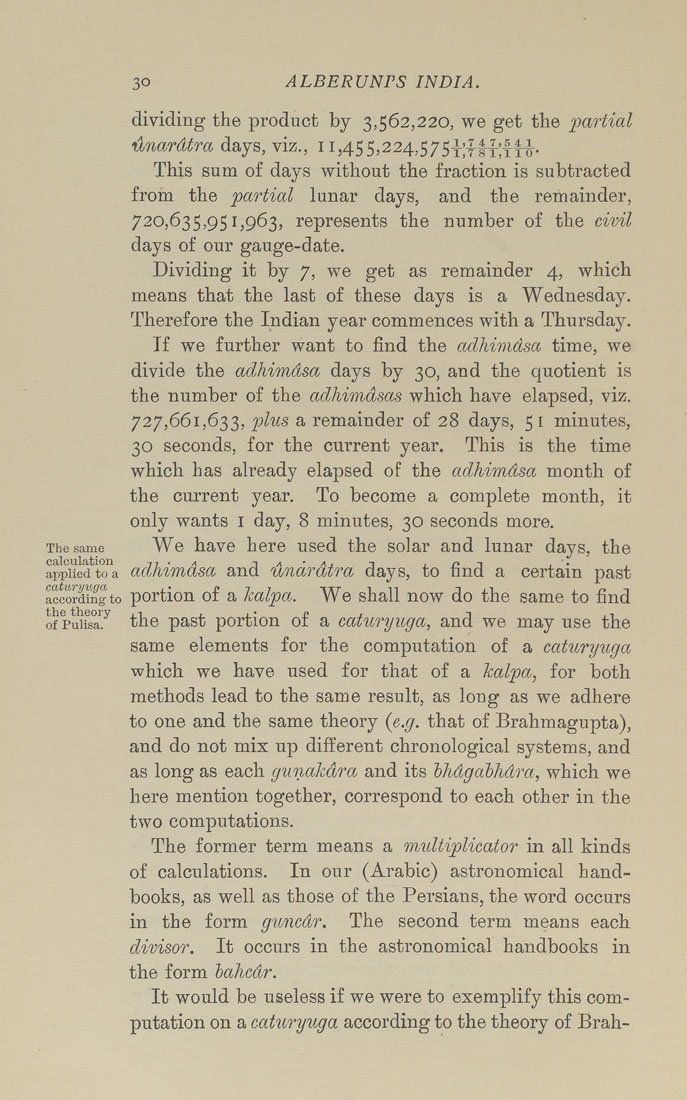30 ALBERUNTS INDIA.
dividing the product by 3,562,220, we get the partial
unardtra days, viz., ii,455,224,575i;|-f-^;ffi.
This sum of days without the fraction is subtracted
from the partial lunar days, and the remainder,
720,635,951,963, represents the number of the civil
days of our gauge-date.
Dividing it by 7, we get as remainder 4, which
means that the last of these days is a Wednesday.
Therefore the Indian year commences with a Thursday.
If we further want to find the adhimdsa time, we
divide the adhimdsa days by 30, and the quotient is
the number of the adhimdsas which have elapsed, viz.
727,661,633, plus a remainder of 28 days, 51 minutes,
30 seconds, for the current year. This is the time
which has already elapsed of the adhimdsa month of
the current year. To become a complete month, it
only wants I day, 8 minutes, 30 seconds more.
The same Wc havc here used the solar and lunar days, the
calculation n ■ a i a • a , -i , n -i , '•
applied to a aoAimasa and unaratra days, to find a certain past
according'to portiou of a kalpa. We shall now do the same to find
of Pulisa.^ the past portion of a caturyuga, and we may use the
same elements for the computation of a caturyugct
which we have used for that of a kalpa, for both
methods lead to the same result, as long as we adhere
to one and the same theory (e.g. that of Brahmagupta),
and do not mix up different chronological systems, and
as long as each gunakdra and its bhdgahhdra, which we
here mention together, correspond to each other in the
two computations.
The former term means a m.ultiplicator in all kinds
of calculations. In our (Arabic) astronomical hand¬
books, as well as those of the Persians, the word occurs
in the form guncdr. The second term means each
divisor. It occurs in the astronomical handbooks in
the form hahcdr.
It would be useless if we were to exemplify this com¬
putation on a caturyuga according to the theory of Brah-
|








